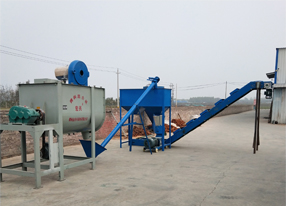Innovative Designs for Layer Poultry Cages to Enhance Egg Production Efficiency
Nov . 06, 2024 13:49 Back to list
Innovative Designs for Layer Poultry Cages to Enhance Egg Production Efficiency
Layer Poultry Cages Enhancing Efficiency in Commercial Egg Production
In the poultry industry, layer chickens are specifically bred for their egg-laying capabilities. To optimize production and ensure a comfortable living environment for these birds, layer poultry cages play a crucial role. These specialized cages not only provide space for the hens but also facilitate effective management of their health and productivity. As the demand for eggs continues to grow globally, the implementation of layer poultry cages has become increasingly important for both small-scale and large-scale farmers.
One of the primary advantages of using layer poultry cages is the maximization of space
. In a commercial setting, space is often at a premium, and these cages allow farmers to house a large number of birds in a compact area. This vertical stacking of cages not only conserves floor space but also increases the density of hens, leading to higher egg production per square foot. With proper management, a well-designed cage system can significantly boost the output of eggs, translating to increased profitability for the farm.Additionally, layer poultry cages improve accessibility for farmers. This system enables easier monitoring of the birds' health and well-being. Farmers can quickly check for signs of illness or distress without having to navigate through free-ranging flocks. Regular inspections for egg production, feed consumption, and overall health are essential in ensuring optimal yield. By centralizing the hens within a controlled environment, farmers can also implement biosecurity measures more effectively, reducing the risk of disease outbreaks that can devastate flocks.
layer poultry cages

Layer poultry cages also contribute to hygiene and waste management. In traditional poultry farming, the accumulation of droppings can lead to unsanitary conditions, increasing the risk of disease transmission among the birds. Cages, however, can be equipped with trays or scrapers that facilitate the collection of waste, which can be removed regularly to maintain cleanliness. Cleaner environments reduce the likelihood of illnesses and can lead to better overall health and productivity in layers.
Moreover, these cages are designed to accommodate the specific needs of layer hens. For instance, many modern cages are equipped with individual nesting boxes, ensuring that hens can lay their eggs in a designated area, which helps prevent stress and encourages consistent laying patterns. Furthermore, features like adjustable feeding systems and automated watering solutions enhance the welfare of the hens and streamline farm operations.
However, the use of layer poultry cages is not without its criticisms. Animal welfare advocates often argue that confinement in cages can lead to stress and behavioral issues among chickens. This has led to a growing trend towards enriched or cage-free systems that allow hens more space and freedom to move. Farmers must find a balance between maximizing productivity and ensuring the welfare of their flock, which can influence public perception and demand for products.
In conclusion, layer poultry cages are an essential component of modern poultry farming, offering multiple benefits in terms of space utilization, biosecurity, hygiene, and productivity. As the industry evolves, it is crucial for farmers to innovate and adapt their practices to meet both market demands and animal welfare standards. By leveraging the advantages of layer cages while also considering the well-being of the birds, poultry farmers can contribute to a sustainable and efficient egg production system that addresses the needs of both consumers and livestock alike.
-
Hot Sale 24 & 18 Door Rabbit Cages - Premium Breeding Solutions
NewsJul.25,2025
-
Automatic Feeding Line System Pan Feeder Nipple Drinker - Anping County Yize Metal Products Co., Ltd.
NewsJul.21,2025
-
Automatic Feeding Line System Pan Feeder Nipple Drinker - Anping County Yize Metal Products Co., Ltd.
NewsJul.21,2025
-
Automatic Feeding Line System - Anping Yize | Precision & Nipple
NewsJul.21,2025
-
Automatic Feeding Line System - Anping Yize | Precision & Nipple
NewsJul.21,2025
-
Automatic Feeding Line System-Anping County Yize Metal Products Co., Ltd.|Efficient Feed Distribution&Customized Animal Farming Solutions
NewsJul.21,2025






